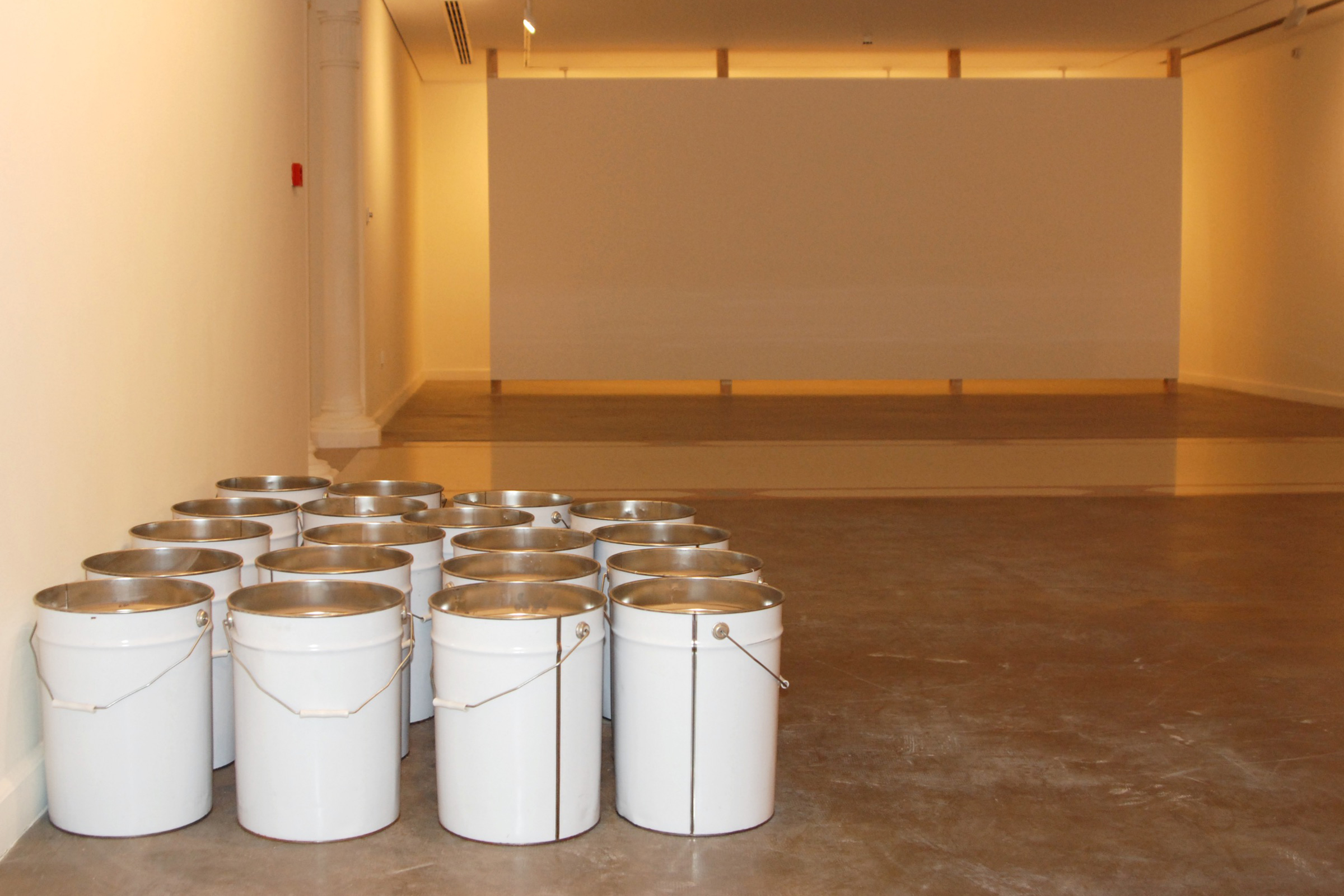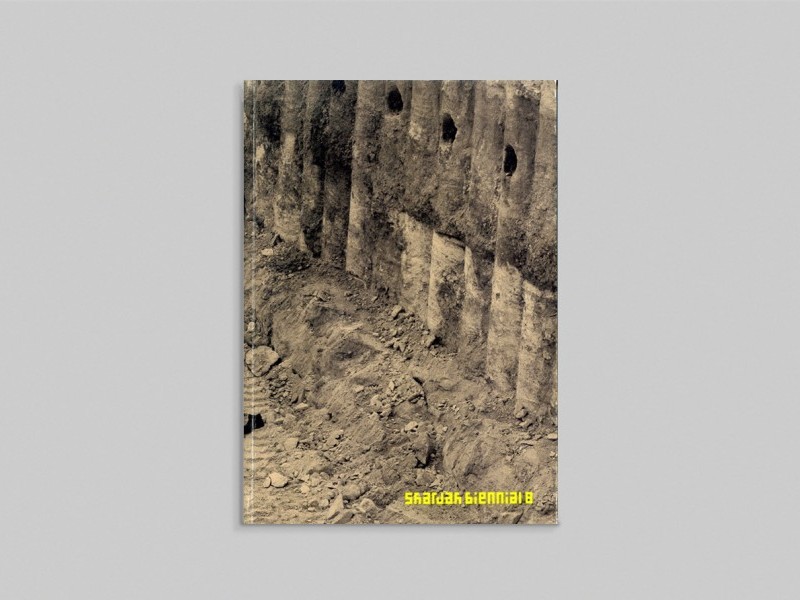
Waste, 2001
Ignasi Aballí
Waste, 2001
Opened cans with 250 kg of industrial paint
Dimensions variable
Installation view
Courtesy of Col.lecció Cal Cego, Barcelona
search


Ignasi Aballí
Waste, 2001
Opened cans with 250 kg of industrial paint
Dimensions variable
Installation view
Courtesy of Col.lecció Cal Cego, Barcelona
To come in through the door of a museum and see 20 large, open buckets of white industrial paint on the floor is somewhat perplexing. Our first feeling is one of hesitation, or misgiving, as if the museum were still being prepared and we have arrived too early for the Ignasi Aballi exhibition: after all, this is a modern museum, they must be adding the final touches to the white cube? Or else the exhibition is over and they’ve already repainted the walls for the next one? Whatever the case, we have the feeling there’s been a hitch, a mistake: if we are not early, maybe the museum, the artist, the curator or the technical crew are running late? A few pots of paint left on the floor and seen from a distance are enough to generate uncertainty and misgiving, opening up a sort of time warp between too soon and too late. This work – because it is a work, and seemingly a very simple one, called Malgastar – possesses the strange power to suspend the present, the present of the work at the time of viewing it, and thus to suspend the work itself. And in so doing, it puts the viewer in the position of seeing something other than the work, of seeing what s/he’s not supposed to see: a time preceding the work, the preparations for a work or an exhibition, the behind-the-scenes business of art and museums, a vertiginous temporal upsetting, in which the work of art becomes a machine for looking at the past. You could call this a “witches’ brew”, thinking back to the opening scene of Macbeth where, as if the curtain has risen too early, the audience surprises the three witches in “a desert place”, making their deadly predictions – we should not have been there, should not have seen what happens before the actual story begins: a stolen vision in which we intrude on a secret not meant for us, an art secret, a magic moment. The works of Ignasi Aballí are written into time. The works of Ignasi Aballí write time. The works of Ignasi Aballí disturb time. Maps of the past, they rise out of time warps: between before and after, yesterday and today, between what’s seen and what happens, between now, before and after. Or rather, offering themselves in the moment of seeing that is our present, it is they themselves that open up the time warps. In all their seeming immobility, the works of Ignasi Aballí are works in motion. For as Aristotle says in Physics, Book VIII, “Time is the number of motion” in terms of ‘before’ and ‘after’.”
Gérard Wajcman, Memory, Sight, Expectation, inside catalogue 0- 24h, Museu d’Art Contemporani de Barcelona; Museu de Serralves, Porto; Ikon Gallery, Birmingham (2005-2006).
This project was part of Sharjah Biennial 8.

This catalogue accompanied Sharjah Biennial 8, which attempted to renegotiate the relationship between art and ecology into a system of cohabitation.

The second book in the Still Life: Art, Ecology and the Politics of Change series, documents Sharjah Biennial 8 as it was on view.